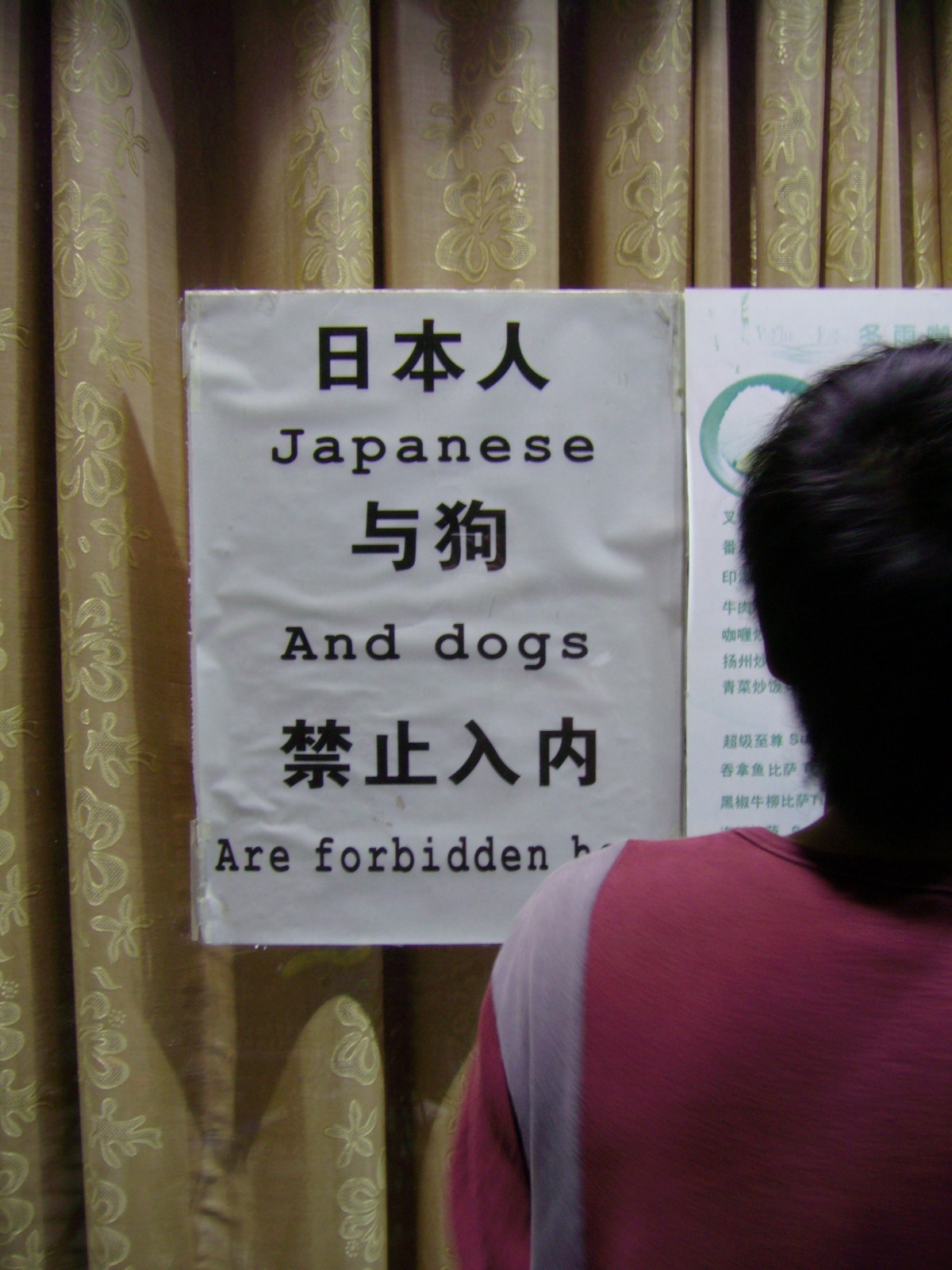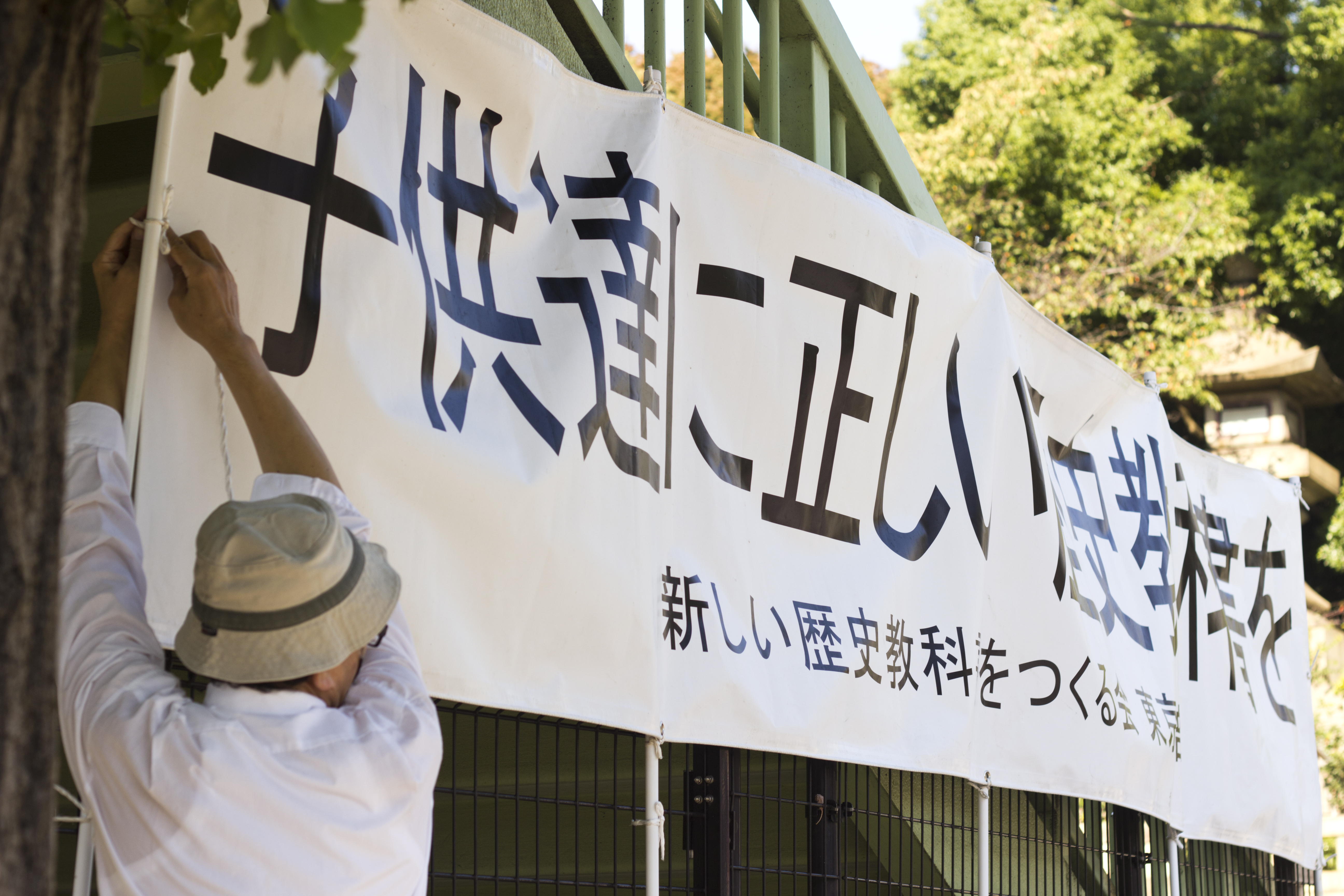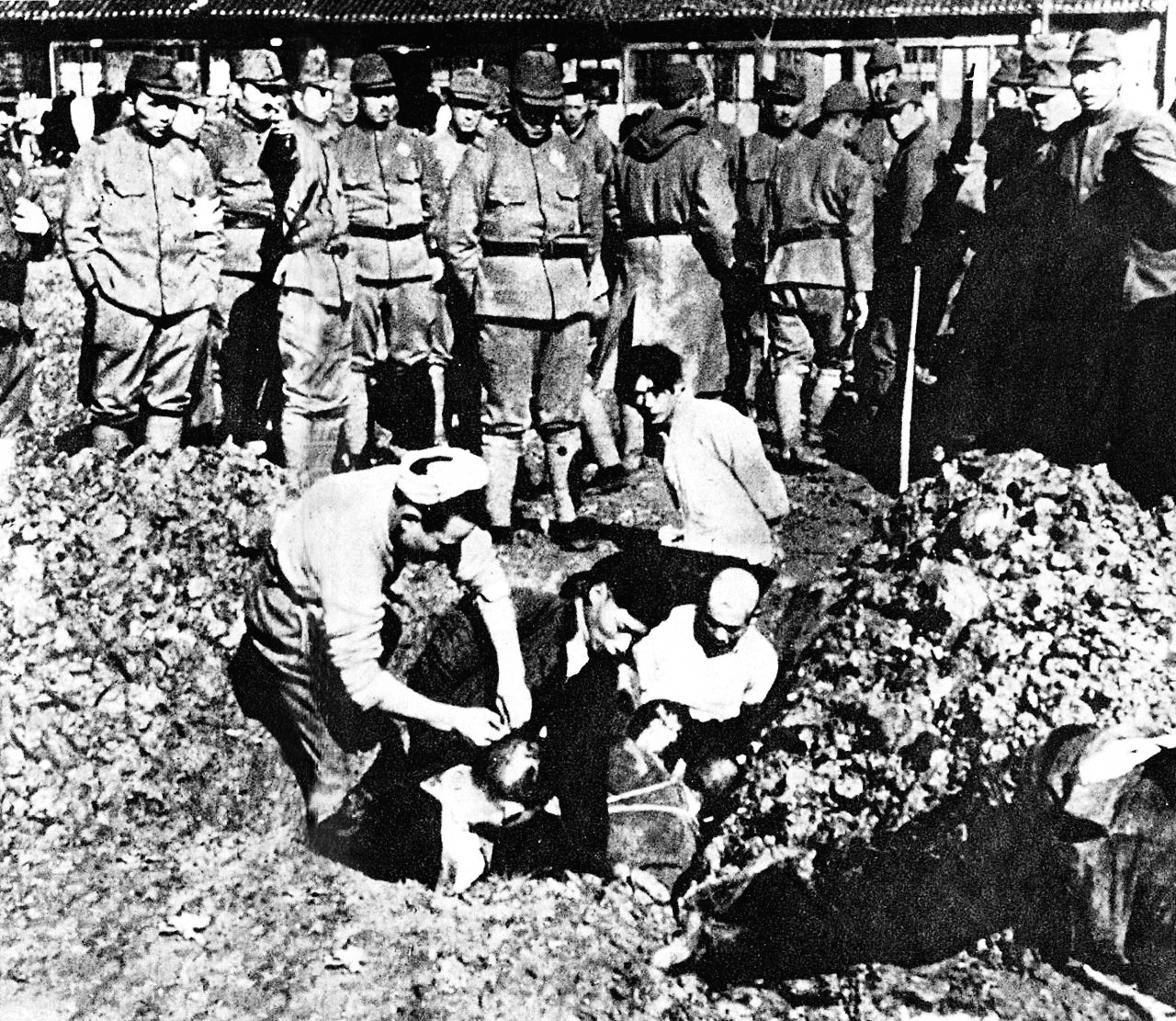|
Fenqing
Fenqing (), or FQ (abbreviation), which is itself an abbreviation for ''Fennu Qingnian'' (), means literally "angry youth". It mainly refers to Chinese youth who display a high level of Chinese nationalism.Chinese Education & Society, V39#3 (May–June 2006), P3-9 This term first appeared in Hong Kong in the 1970s, referring to those young people who were not satisfied with Chinese society and sought reform. It has now evolved into a term used predominantly in Internet slang. Whether ''fenqing'' is derogatory or not usually depends on the person. Chinese critics often refer to them using the homophone characters "" which are pronounced identically but translate to "shit-youth". This is often changed further to ''fènfèn'' () as a derogatory nickname. Development The phenomenon of ''fenqing'' arose after the "reform and opening up" of the Chinese government, during the period of fast economic development that occurred in China. Some people argue that ''fenqing'' are a natural ... [...More Info...] [...Related Items...] OR: [Wikipedia] [Google] [Baidu] |
Chinese Nationalism
Chinese nationalism () is a form of nationalism in the People's Republic of China (Mainland China) and the Republic of China on Taiwan which asserts that the Chinese people are a nation and promotes the cultural and national unity of all Chinese people. It is often equated with Han nationalism, although these two concepts are different. According to Sun Yat-sen's philosophy in the Three Principles of the People, Chinese nationalism should be a form of civic nationalism constructed on top of a united value, however this has not been fully recognized or applied in practice by successors. Modern Chinese nationalism emerged in the late Qing dynasty (1636–1912) in response to the humiliating defeat in the First Sino-Japanese War and the invasion and pillaging of Beijing by the Eight-Nation Alliance. In both cases, the aftermath forced China to pay financial reparations and grant special privileges to foreigners. The nationwide image of China as a superior Celestial Empir ... [...More Info...] [...Related Items...] OR: [Wikipedia] [Google] [Baidu] |
China Radio International
China Radio International (CRI) is the state-owned international radio broadcaster of China. It is currently headquartered in the Babaoshan area of Beijing's Shijingshan District. It was founded on December 3, 1941, as Radio Peking. It later adopted the pinyin form Radio Beijing. CRI states that it "endeavours to promote favourable relations between the PRC and the world" while upholding the PRC's official positions. As with other nations' external broadcasters such as Voice of America, BBC World Service and Radio Australia, CRI claims to "play a significant role in the PRC's soft power strategy" and Go Out policy, aiming to expand the influence of Chinese culture and media in a global stage. CRI attempts to employ new media to compete with other international media. Unlike other broadcasters, CRI's control via indirect majority ownership or financial support of radio stations in various nations is not publicly disclosed. CRI is presently the international radio arm of th ... [...More Info...] [...Related Items...] OR: [Wikipedia] [Google] [Baidu] |
Anti-Japanese Sentiment
Anti-Japanese sentiment (also called Japanophobia, Nipponophobia and anti-Japanism) involves the hatred or fear of anything which is Japanese, be it its culture or its people. Its opposite is Japanophilia. Overview Anti-Japanese sentiments range from animosity towards the Japanese government's actions and disdain for Japanese culture to racism against the Japanese people. Sentiments of dehumanization have been fueled by the anti-Japanese propaganda of the Allied governments in World War II; this propaganda was often of a racially disparaging character. Anti-Japanese sentiment may be strongest in Korea and China, due to atrocities committed by the Japanese military. In the past, anti-Japanese sentiment contained innuendos of Japanese people as barbaric. Following the Meiji Restoration of 1868, Japan was intent to adopt Western ways in an attempt to join the West as an industrialized imperial power, but a lack of acceptance of the Japanese in the West complicated integr ... [...More Info...] [...Related Items...] OR: [Wikipedia] [Google] [Baidu] |
Uyoku Dantai
refers to Japanese ultranationalist far-right activists, provocateurs, and internet trolls (as ''netto-uyoku'') often organized in groups. In 1996 and 2013, the National Police Agency estimated that there were over 1,000 right-wing groups in Japan with about 100,000 members in total. Philosophies and activities are well known for their highly visible propaganda vehicles, known as . The vehicles are usually black, khaki or olive drab, and are decorated with the Imperial Seal, the flag of Japan and the Japanese military flag. They are primarily used to stage protests outside organizations such as the Chinese, Korean or Russian embassies, Chongryon facilities and media organizations, where propaganda (both taped and live) is broadcast through their loudspeakers. They can sometimes be seen driving around cities or parked in busy shopping areas, broadcasting propaganda, military music or , the national anthem. The Greater Japan Patriotic Party, supportive of the US–Japan&n ... [...More Info...] [...Related Items...] OR: [Wikipedia] [Google] [Baidu] |
Japanese History Textbook Controversies
Japanese history textbook controversies involve controversial content in government-approved history textbooks used in the secondary education (junior high schools and high schools) of Japan. The controversies primarily concern the nationalist right efforts to whitewash the actions of the Empire of Japan during World War II. Another serious issue is the constitutionality of the governmentally-approved textbook depictions of World War II, Japanese war crimes, and Japanese imperialism during the first half of the 20th century. The history textbook controversies have been an issue of deep concern both domestically and internationally, particularly in countries that were victims of Imperial Japan during the war. Despite the efforts of the nationalist textbook reformers, by the late 1990s the most common Japanese schoolbooks contained references to, for instance, the Nanjing Massacre, Unit 731, and the comfort women of World War II, all historical issues which have faced challenges fr ... [...More Info...] [...Related Items...] OR: [Wikipedia] [Google] [Baidu] |
Senkaku Islands
The are a group of uninhabited islands in the East China Sea, administered by Japan. They are located northeast of Taiwan, east of China, west of Okinawa Island, and north of the southwestern end of the Ryukyu Islands. They are known in mainland China as the Diaoyu Islands or Diaoyu Dao and its affiliated islands (; also simply ), in Taiwan as the Diaoyutai Islands or Tiaoyutai Islands (), and sometimes in the Western world by the historical name Pinnacle Islands. cites Hagstrom 2005; "The islands are also called 'Pinnacle Islands' for convenience and neutrality sake by Western scholars" In Okinawan they are called . In the Yaeyama language, they are called ''iigunkubajima''. The islands are the focus of a territorial dispute between Japan and China and between Japan and Taiwan. China claims the discovery and ownership of the islands from the 14th century, while Japan maintained ownership of the islands from 1895 until its surrender at the end of World War II. The United ... [...More Info...] [...Related Items...] OR: [Wikipedia] [Google] [Baidu] |
Yasukuni Shrine
is a Shinto shrine located in Chiyoda, Tokyo. It was founded by Emperor Meiji in June 1869 and commemorates those who died in service of Empire of Japan, Japan, from the Boshin War of 1868–1869, to the two Sino-Japanese Wars, First Sino-Japanese War, 1894–1895 and Second Sino-Japanese War, 1937–1945 respectively, and the First Indochina War#Japanese volunteers, First Indochina War of 1946–1954, including Japanese war crimes, war criminals. The shrine's purpose has been expanded over the years to include those who died in the List of wars involving Japan, wars involving Japan spanning from the entire Meiji period, Meiji and Taishō periods, and the earlier part of the Shōwa period. The shrine lists the names, origins, birthdates, and places of death of 2,466,532 men, women, children, and various pet animals. Among those are 1,068 convicted War crime, war criminals, 14 of whom are International Military Tribunal for the Far East#Charges, A-Class (convicted of having been ... [...More Info...] [...Related Items...] OR: [Wikipedia] [Google] [Baidu] |
Japanese War Crimes
The Empire of Japan committed war crimes in many Asian-Pacific countries during the period of Japanese militarism, Japanese imperialism, primarily during the Second Sino-Japanese War, Second Sino-Japanese and Pacific Wars. These incidents have been described as an "Asian Holocaust". Some war crimes were committed by Japanese military personnel during the late 19th century, but most were committed during the first part of the Shōwa (1926–1989), Shōwa era, the name given to the reign of Emperor of Japan, Emperor Hirohito. Under Emperor Hirohito, the Imperial Japanese Army (IJA) and the Imperial Japanese Navy (IJN) perpetrated numerous war crimes which resulted in the deaths of millions of people. Estimates of the number of deaths range from three to 30 million through Nanjing Massacre, massacres, Unit 731, human experimentation, Vietnamese famine of 1945, starvation, and Slavery in Japan#World War II, forced labor directly perpetrated or condoned by the Japanese military and go ... [...More Info...] [...Related Items...] OR: [Wikipedia] [Google] [Baidu] |
List Of War Apology Statements Issued By Japan
This is a list of war apology statements issued by Japan regarding war crimes committed by the Empire of Japan during World War II. The statements were made at and after the end of World War II in Asia, from the 1950s to present day. Controversies remain to this day about war crimes of the past. Background At the end of the Pacific Theater of World War II, the Imperial Japanese government accepted the terms of the Potsdam Declaration. In 1945, the unconditional surrender of the Empire of Japan was formally confirmed aboard the Allied battleship, USS ''Missouri'' (BB-63). Once the formal documents were signed, General Douglas MacArthur, representing the Allies, was named the Supreme Commander of the Allied Powers in Japan. Emperor Hirohito let it be known to General MacArthur that he was prepared to apologize formally to General MacArthur for Japan's actions during World War II—including an apology for the December 7, 1941, attack on Pearl Harbor. Apology rebuffed In one ver ... [...More Info...] [...Related Items...] OR: [Wikipedia] [Google] [Baidu] |
Imperial Japan
The also known as the Japanese Empire or Imperial Japan, was a historical nation-state and great power that existed from the Meiji Restoration in 1868 until the enactment of the post-World War II 1947 constitution and subsequent formation of modern Japan. It encompassed the Japanese archipelago and several colonies, protectorates, mandates, and other territories. Under the slogans of and following the Boshin War and restoration of power to the Emperor from the Shogun, Japan underwent a period of industrialization and militarization, the Meiji Restoration, which is often regarded as the fastest modernisation of any country to date. All of these aspects contributed to Japan's emergence as a great power and the establishment of a colonial empire following the First Sino-Japanese War, the Boxer Rebellion, the Russo-Japanese War, and World War I. Economic and political turmoil in the 1920s, including the Great Depression, led to the rise of militarism, nationalism and ... [...More Info...] [...Related Items...] OR: [Wikipedia] [Google] [Baidu] |
Second Sino-Japanese War
The Second Sino-Japanese War (1937–1945) or War of Resistance (Chinese term) was a military conflict that was primarily waged between the Republic of China and the Empire of Japan. The war made up the Chinese theater of the wider Pacific Theater of the Second World War. The beginning of the war is conventionally dated to the Marco Polo Bridge Incident on 7 July 1937, when a dispute between Japanese and Chinese troops in Peking escalated into a full-scale invasion. Some Chinese historians believe that the Japanese invasion of Manchuria on 18 September 1931 marks the start of the war. This full-scale war between the Chinese and the Empire of Japan is often regarded as the beginning of World War II in Asia. China fought Japan with aid from Nazi Germany, the Soviet Union, United Kingdom and the United States. After the Japanese attacks on Malaya and Pearl Harbor in 1941, the war merged with other conflicts which are generally categorized under those conflicts of World War II a ... [...More Info...] [...Related Items...] OR: [Wikipedia] [Google] [Baidu] |
United States
The United States of America (U.S.A. or USA), commonly known as the United States (U.S. or US) or America, is a country primarily located in North America. It consists of 50 states, a federal district, five major unincorporated territories, nine Minor Outlying Islands, and 326 Indian reservations. The United States is also in free association with three Pacific Island sovereign states: the Federated States of Micronesia, the Marshall Islands, and the Republic of Palau. It is the world's third-largest country by both land and total area. It shares land borders with Canada to its north and with Mexico to its south and has maritime borders with the Bahamas, Cuba, Russia, and other nations. With a population of over 333 million, it is the most populous country in the Americas and the third most populous in the world. The national capital of the United States is Washington, D.C. and its most populous city and principal financial center is New York City. Paleo-Americ ... [...More Info...] [...Related Items...] OR: [Wikipedia] [Google] [Baidu] |
.jpg)
.jpg)





